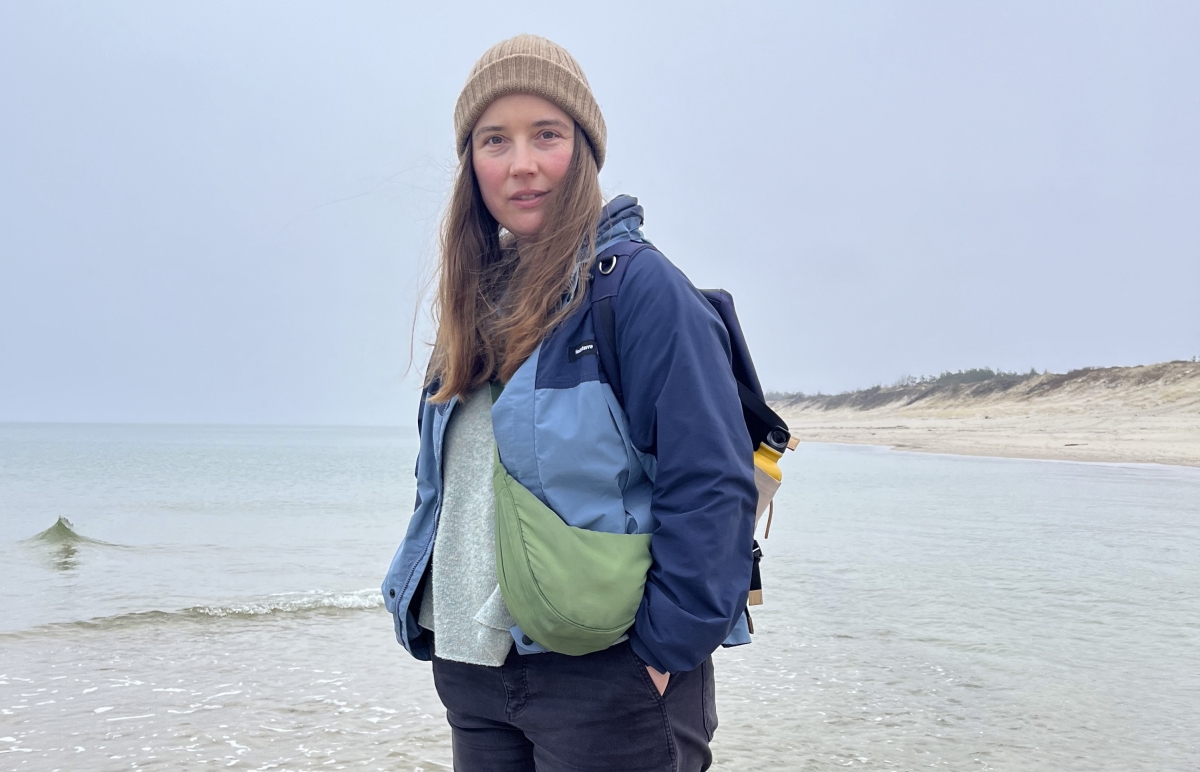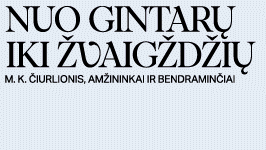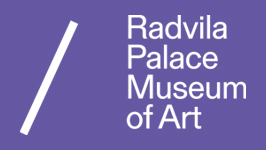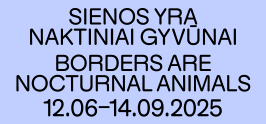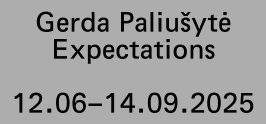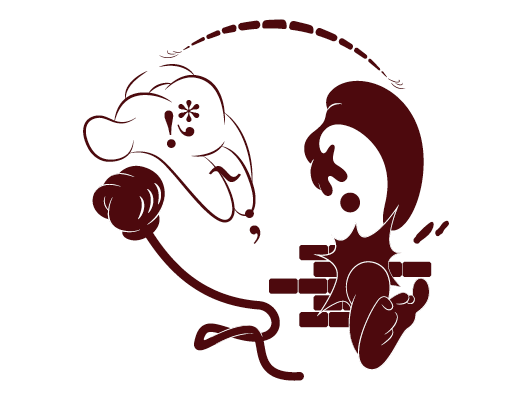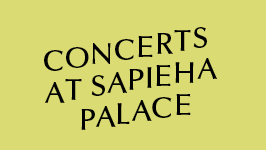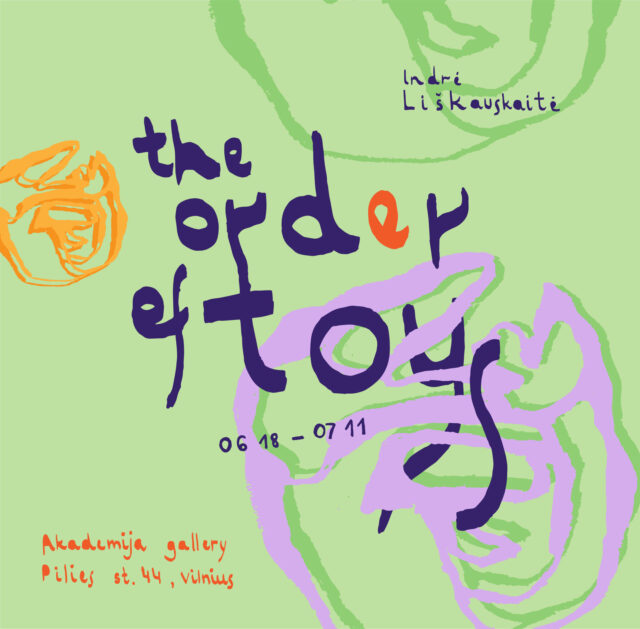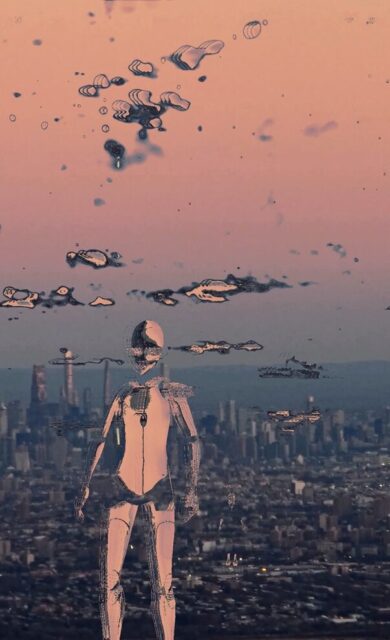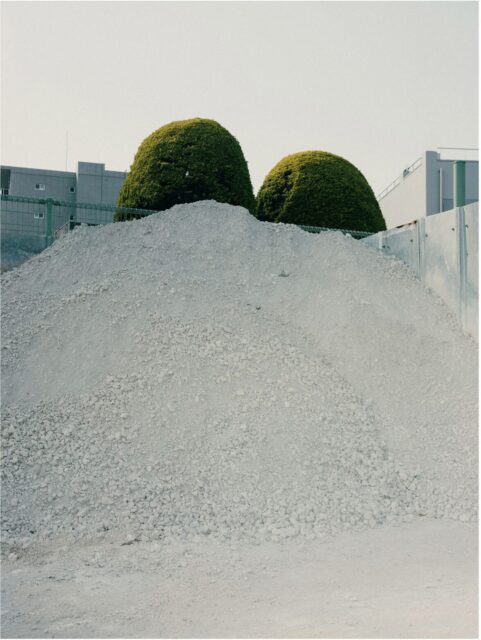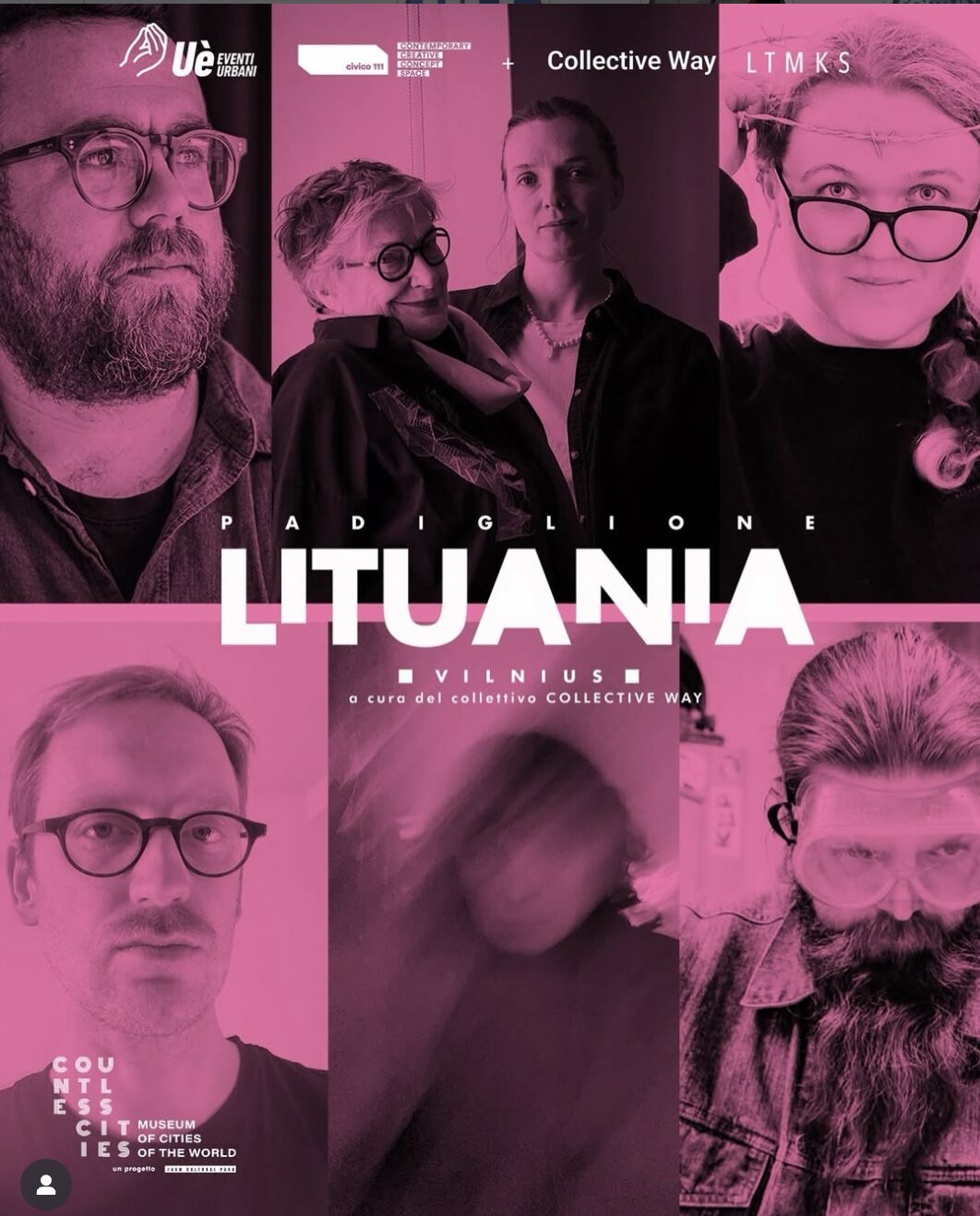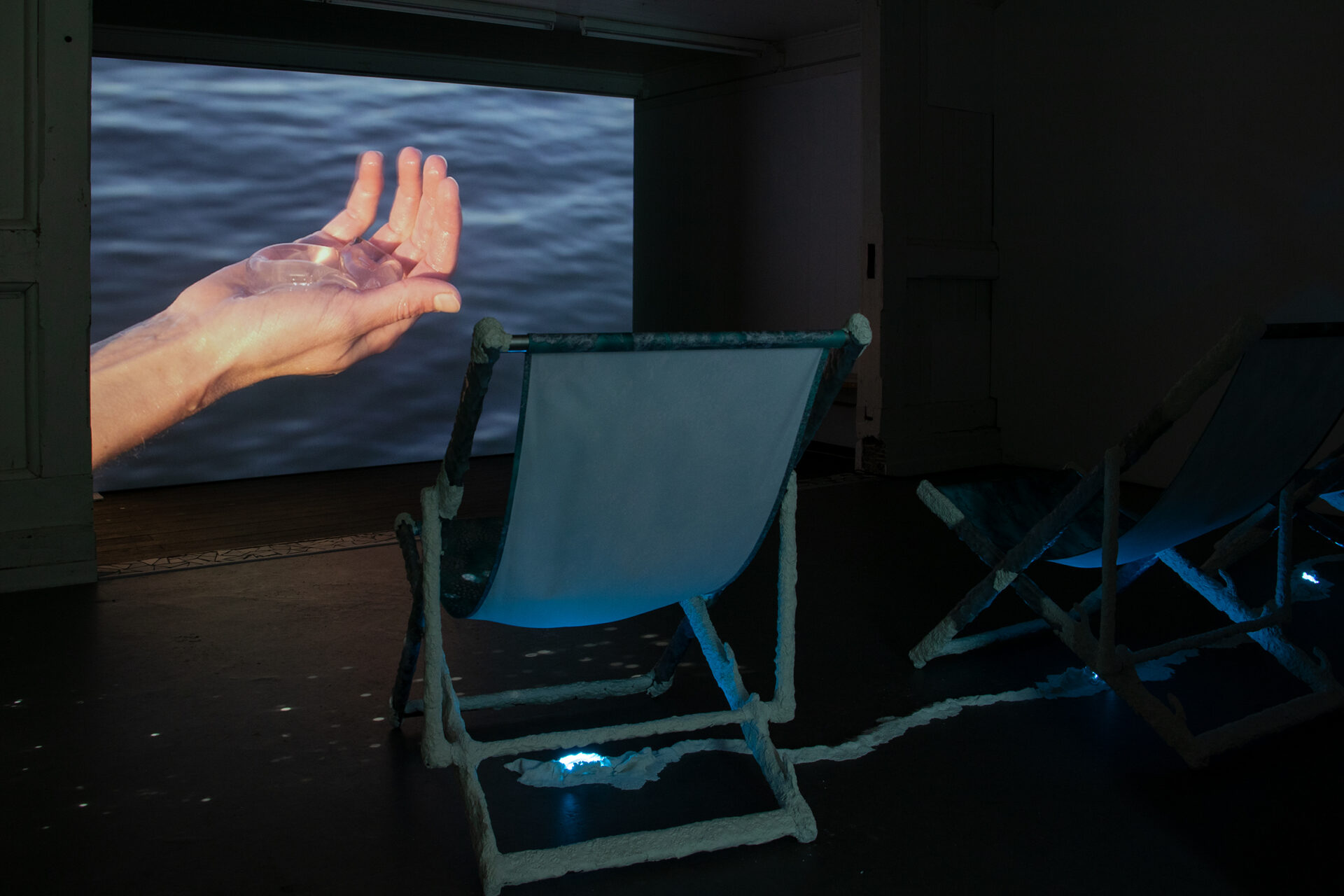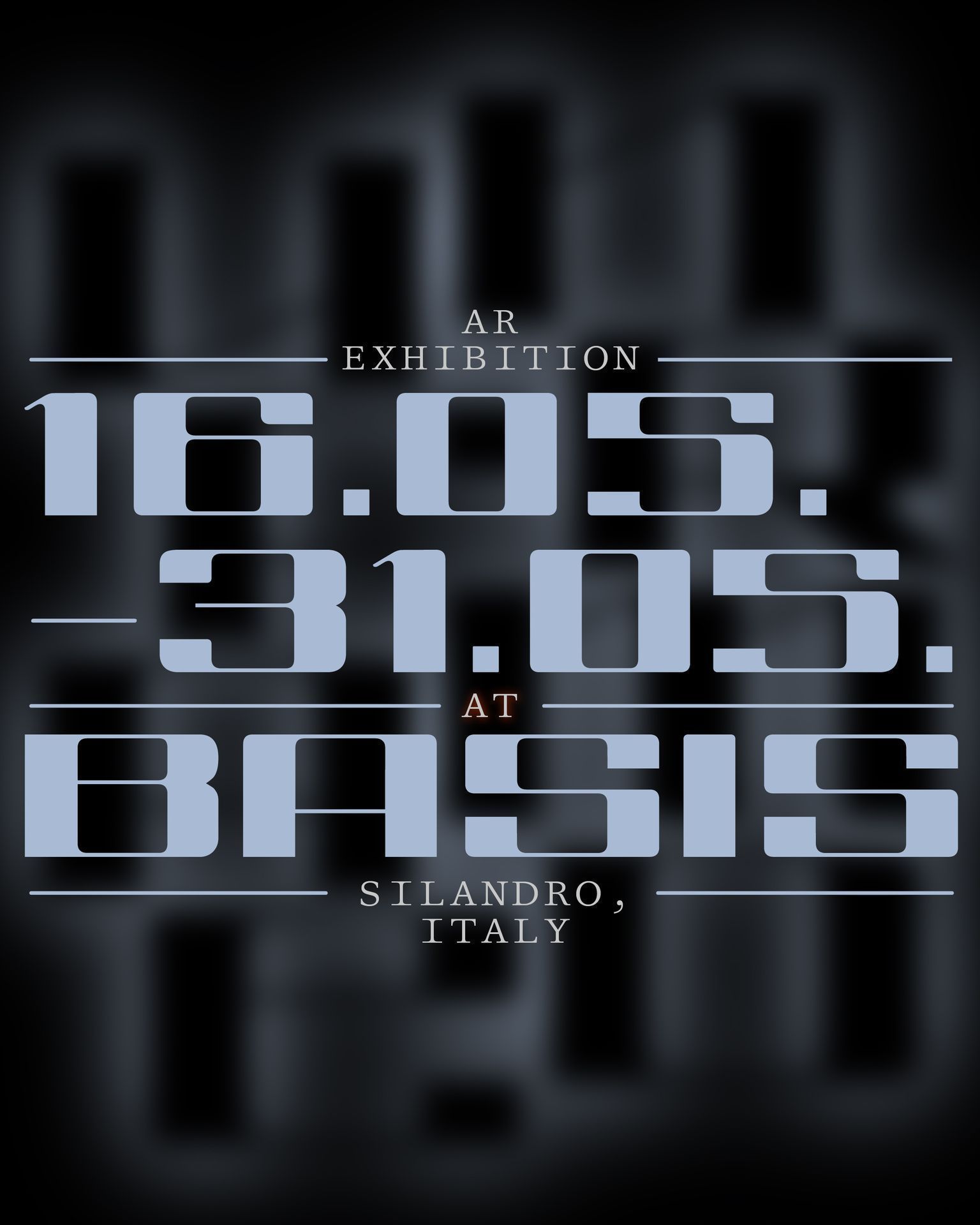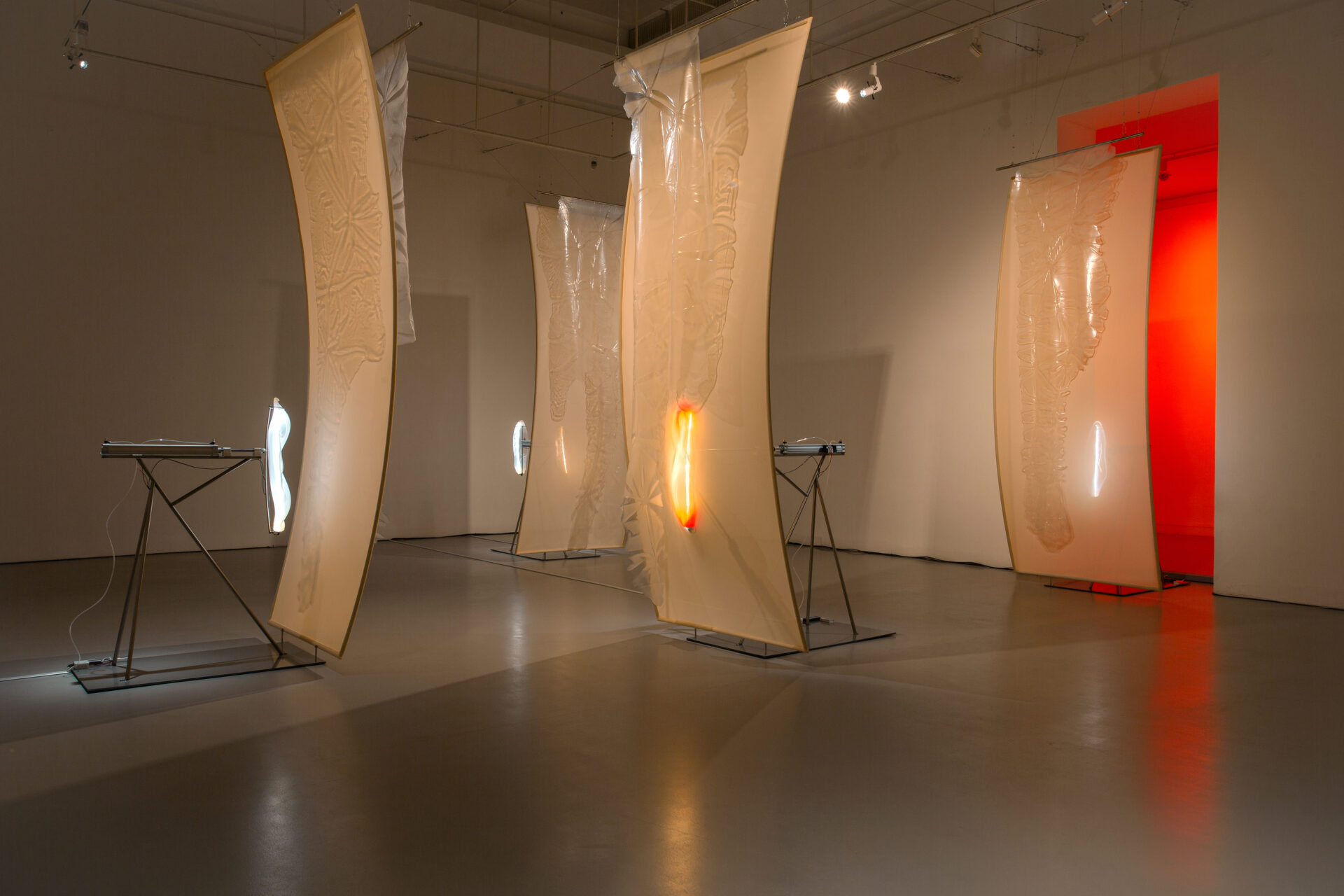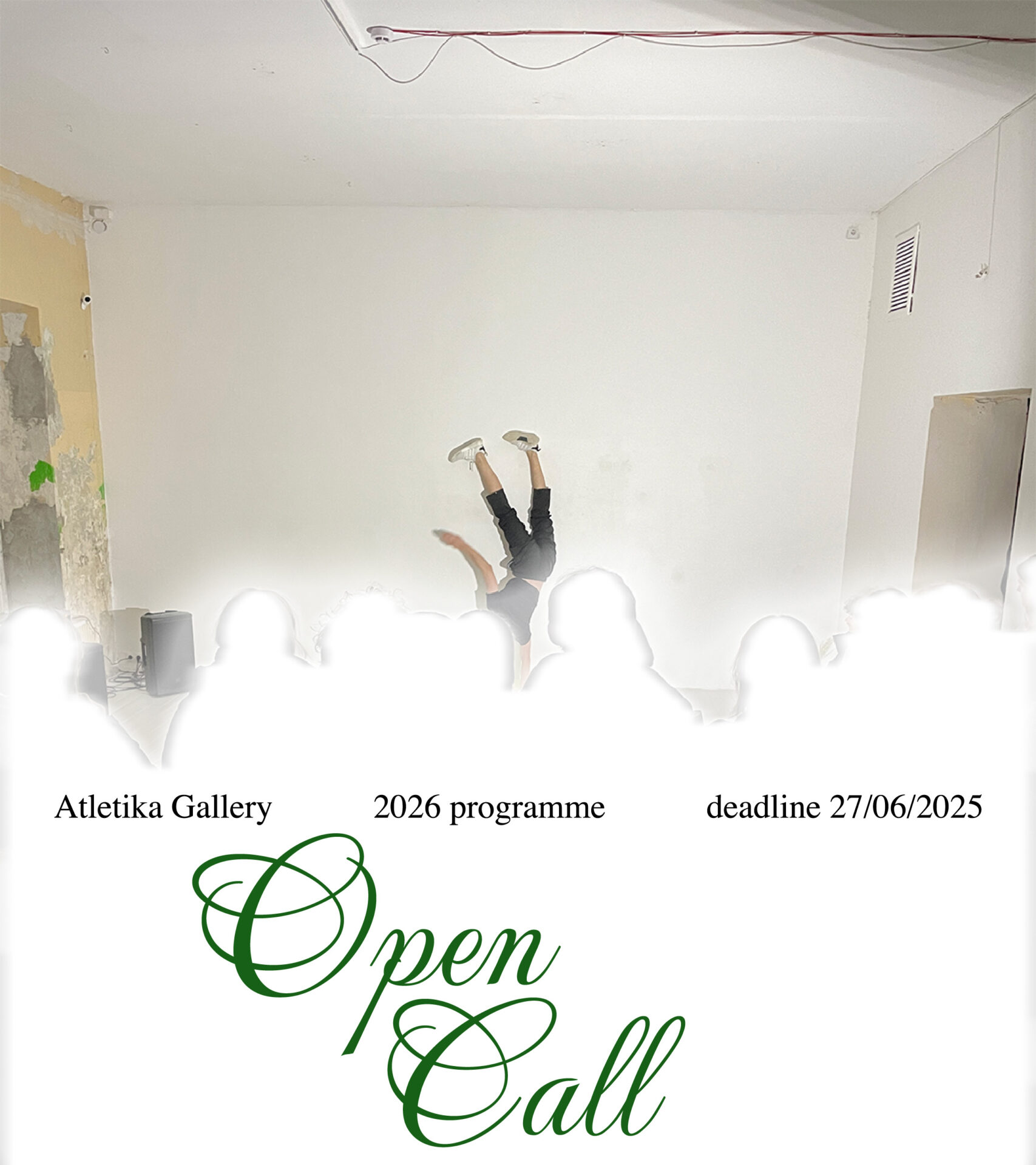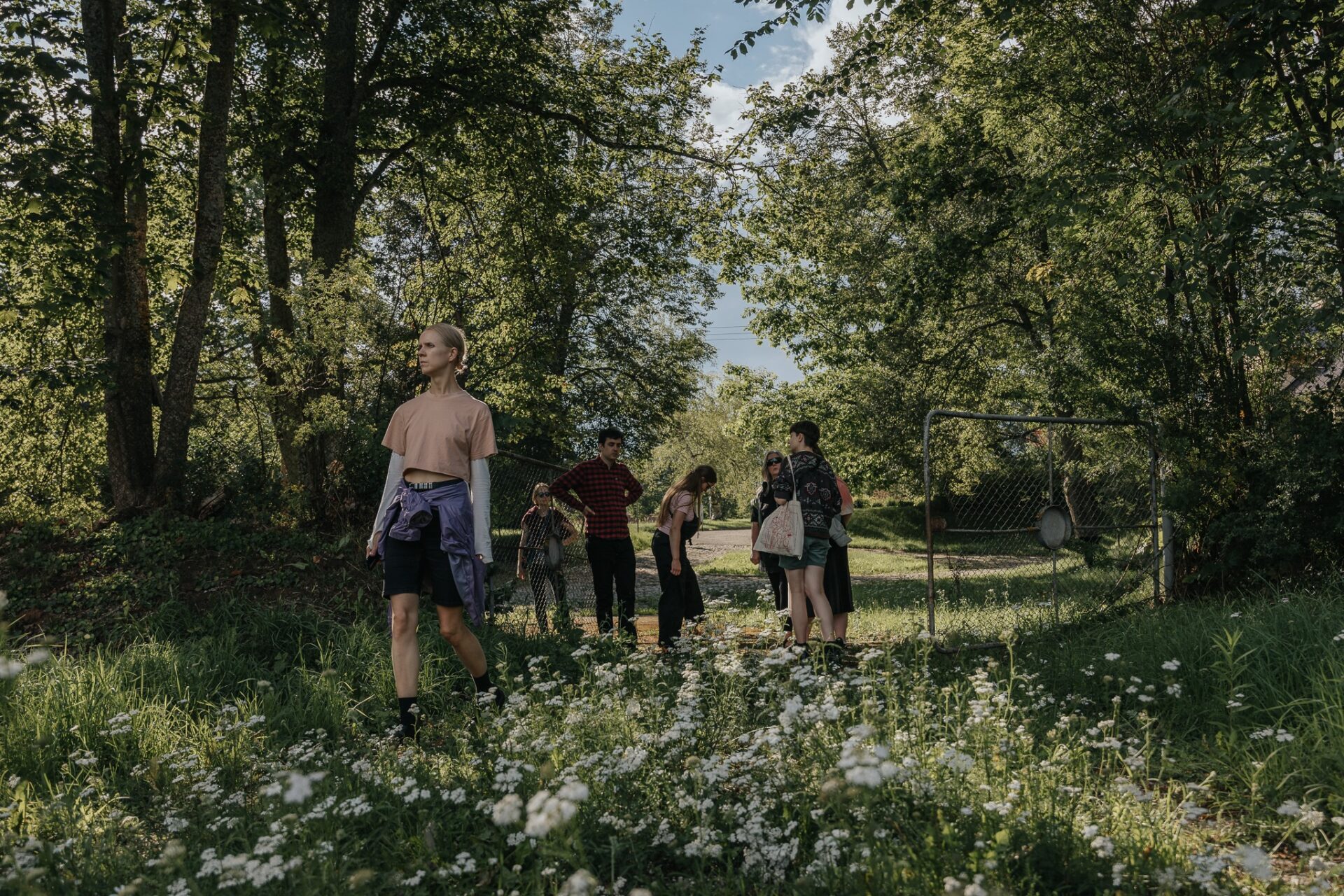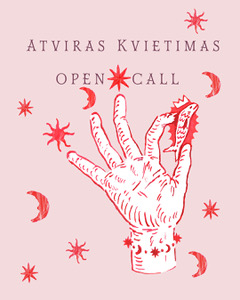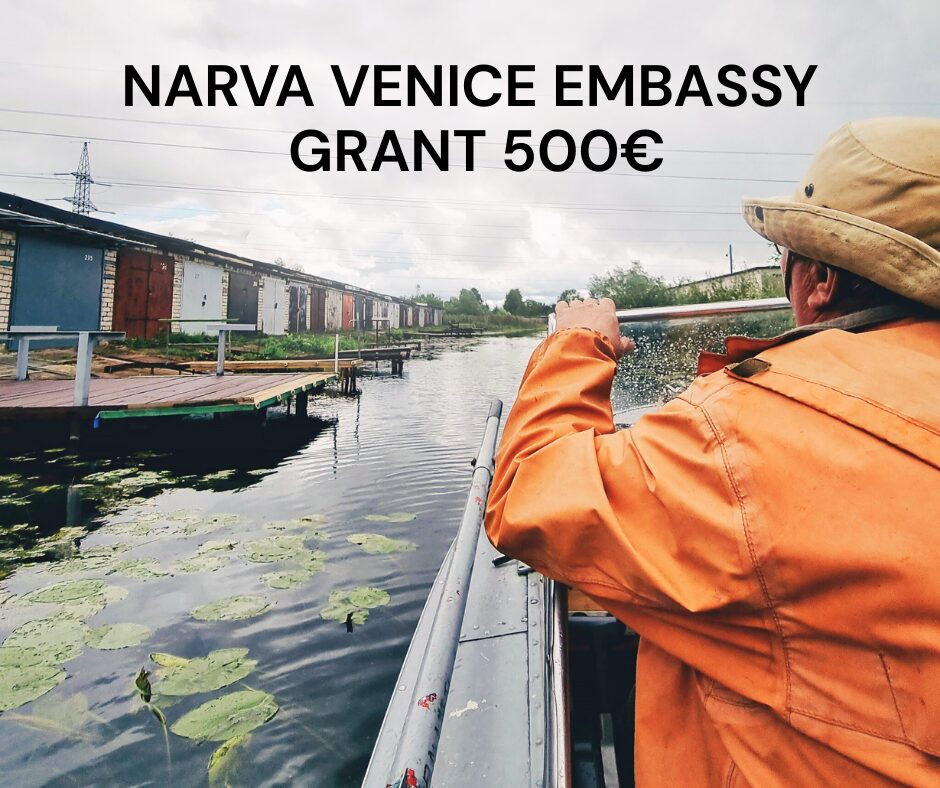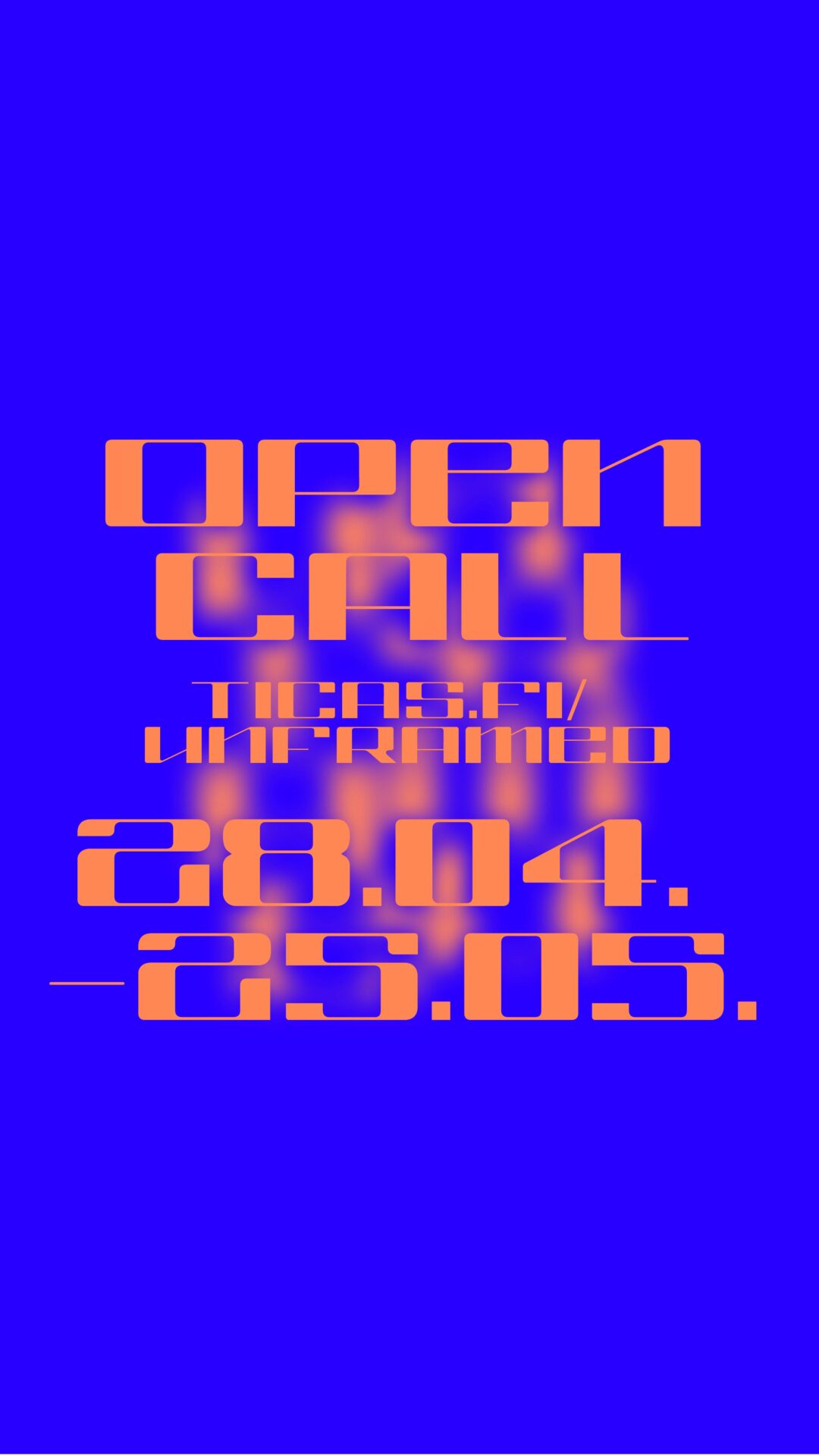Together with Milda Valiulytė, I have worked with Kotryna Ūla Kiliulytė several times. In 2023, we organized Collective Dreaming at the Centre for Contemporary Arts Glasgow: a moving image programme that touched upon the threads of storytelling and environment, unfolded in Kotryna’s work Amateur Botanist (2019). This year, at Meno Avilys in Vilnius, her two moving image works Dyad (2021) and Gentle Touch (2022), from the series Arctic Swell (2020-2022), opened and closed the Lithuanian, Ukrainian and Scottish moving image screening to lay the wee one to sleep (part of Collective Dreaming) that continued the topic of ecological relations.
Kotryna Ūla Kiliulytė is a Glasgow-based Lithuanian artist, who works in the expanded field of photography. Combining image, text and sculptural objects, she has been investigating ecological relations from various angles.
In our conversation, we talked about gentleness, motherhood, responsibility, lullabies, care, the psychology of climate and nature degradation, her childhood in the Šnipiškės neighbourhood of Vilnius, and the human and forest as ecological collections or holobionts. The interview was prepared together with Milda Valiulytė.
JŠ: Let us start with a disclaimer that we know each other creatively. When thinking about the Collective Dreaming programme with Milda, we wanted to stress gentleness through the what and the how of our process. In the context of Lithuania, gentleness seemed quite radical. What is the position of gentleness and its link with politics in your creative work?
KUK: You are onto something. I started to think about gentleness when I was making all four chapters of Arctic Swell, a body of work consisting of moving and still images and a publication. At the time, I read about climate change and its psychology. On the other side of the coin, there was my pregnancy and parenting in isolation during the pandemic, which intensified this surreal feeling even more.
I often spent nights, days and long months in solitude holding the tiny, entirely dependent-on-the-other newborn, that strange new creature (smiling). Then I realised everything I had learned before—the rush, the pursuit of career and creative goals—is worthless when you witness birth, death, loss or caring responsibilities. I never specifically aimed to participate in the Western competition of speed and accomplishment; nevertheless, willingly or unwillingly I took part in that race, worried if I had accomplished enough. Suddenly I chose to be in a situation where these laws were inapplicable. It is impossible to outscream a baby. I learnt that only a calm voice and patience will get you somewhere.
I started to think about this as a metaphor or allegory about my relationship with the environment. I think of the environment not only as nature but also as the connection and compassion between people. Caring for the other is so undervalued under capitalism. When everything shut down, the pandemic showed us what was most important. Suddenly, nurses, medical professionals and cashiers became overnight heroes and now, again, they live on the poverty line and are completely underappreciated.
My experience of being a mother inscribed itself onto this. It is enormous unpaid labour, on the boundary of gender-based division of duties, which usually ends up being done by women. Sometimes these duties are shared between women and men, sometimes not. It is much harder not to shout or slam the door and leave, all these actions that are weirdly understood as culturally masculine. It is so often described: masculine, strong, not babbling, not showing feelings, raised their voice, slammed the door and left. Try giving a person with such traits a delicate, barely surviving creature so that it would live and grow into an unharmed person. That was the beginning of my thinking.
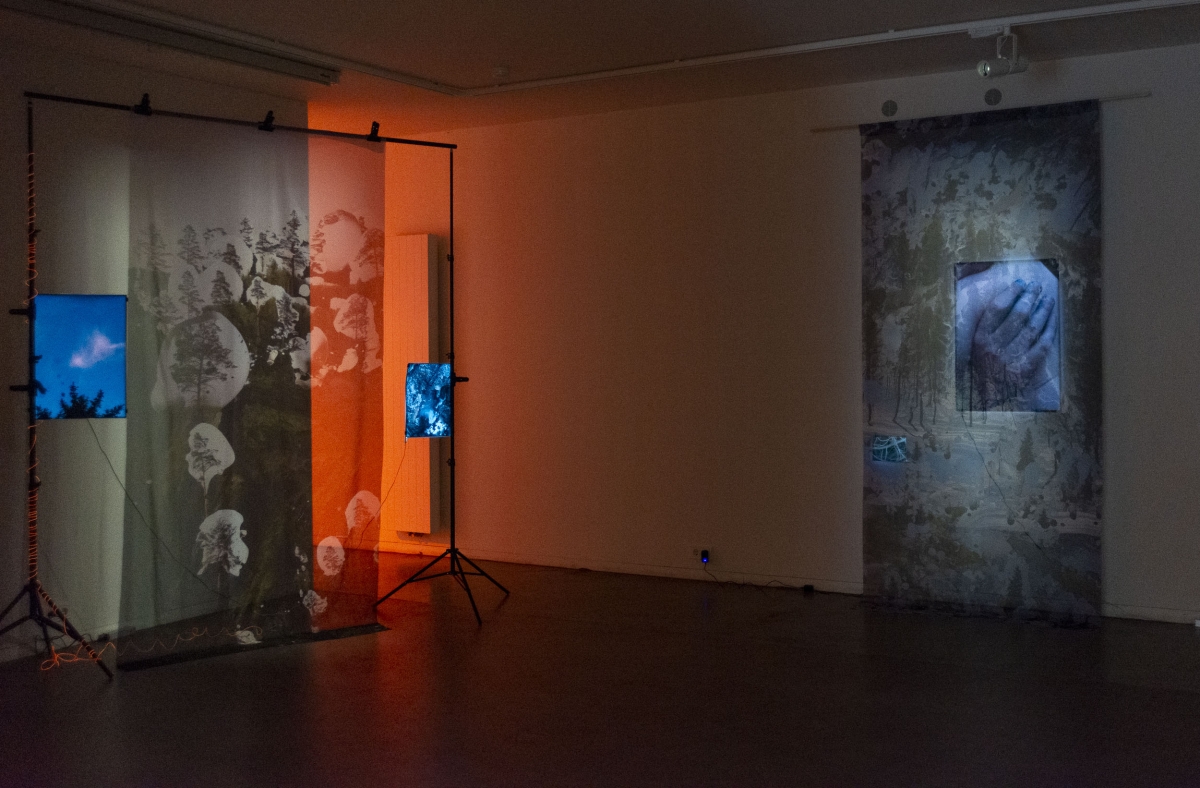
Arctic Swell, Prospekto gallery, Vilnius. Photo: Kotryna Ūla Kiliulytė
JŠ: One of the central themes in Arctic Swell is the lullaby. Through it, the connection between the singer and the one to whom the singing is dedicated (usually, a child and a mother or another person who is caring for the growing person) is being built. Lullaby melodies are usually simple but also sombre. Could you talk more about your process of thinking about them?
KUK: While making this work, I read about lullabies and there was this anthropological theory. Sometimes lullabies were used as therapy for the singer (mother but not necessarily). There are lullabies like that but not Lithuanian and possibly not even Scottish ones. I can recall examples of people from African countries singing about fear and other matters that cause anxiety and danger.
In one of the Arctic Swell works, there is a lullaby in Gaelic. The lullaby is called Highland Fairy Lullaby and it is about a mother who went to collect blueberries. When she came back, she could not find her baby. She looked around, saying that she saw an otter but not her baby. She heard a crane but not her baby. The lullaby comes from Victorian times, it is not so old. It stuck with our family and I learnt it from my partner’s family; his mother used to sing it to him.
Someone who is singing a lullaby is usually going through a massive life metamorphosis towards responsibility, especially when becoming a mother for the first time. The brains of many people who become the primary carers of a small baby (not necessarily biologically) experience visible changes. MRIs show their activated centres of empathy and anxiety which stay that way for the rest of their lives. This happens to dads who did not give birth, carers, foster parents and grandparents—everyone who is caring and feels immense responsibility. I found this fascinating. The lullaby helps to channel the inescapable anxiety of this situation.
JŠ: Then, what could singing a lullaby to the environment mean, or say about our relationship with it? I wonder why you like to use the term solastalgia but not eco-anxiety; both terms reference emotional responses to environmental changes. Solastalgia contains the reaction to past and present changes, while eco-anxiety has more to do with future events. I am curious to hear your thoughts on this quartet consisting of the lullaby, environment, time and lived experience.
KUK: When I worked with the second chapter of Arctic Swell—a simple melody atoms buzz like linden trees in July—the soundtrack consisted of two lullabies and I was thinking about calming and lulling both the planet and oneself. Anxiety, fear and worry are typically unproductive feelings. Acting while being anxious can be difficult or sometimes impossible. Through finding inner calmness, that I associate with inner strength, we can take the first steps to change a situation. Therefore, I find calming down to be the first step towards ecological thought and action.
It is clearly known what must change so that humanity would slow down or at least reduce the effects of human-induced climate change. This includes giving up fossil fuels and redirecting ourselves towards a different economic model that would not be based on endless growth of industry and consumption and would enable the use of renewable resources, and reduce consumption and production. This is clearly known and there still has not been any headway made in loosening the grip of capitalism. Here, time becomes key because we are the people living during these changes, the crisis is happening now. It will not happen sometime soon, in a year or decade, we are already in it. In Europe, we feel the effects on a smaller and gentler scale. However, in other places in the world, the so-called Global South, communities are already getting poorer, starving or have no drinking water. This is why the climate change question is very political. At its core, there are racial, gendered and economic inequalities.
This is how these elements—the lullaby, environment, time and lived experience—become tools or structures in Arctic Swell, which I am using to construct a narrative of radical gentleness. Through them, I search for answers to the questions of what the role of the individual in this swampy situation is and how to act collectively.
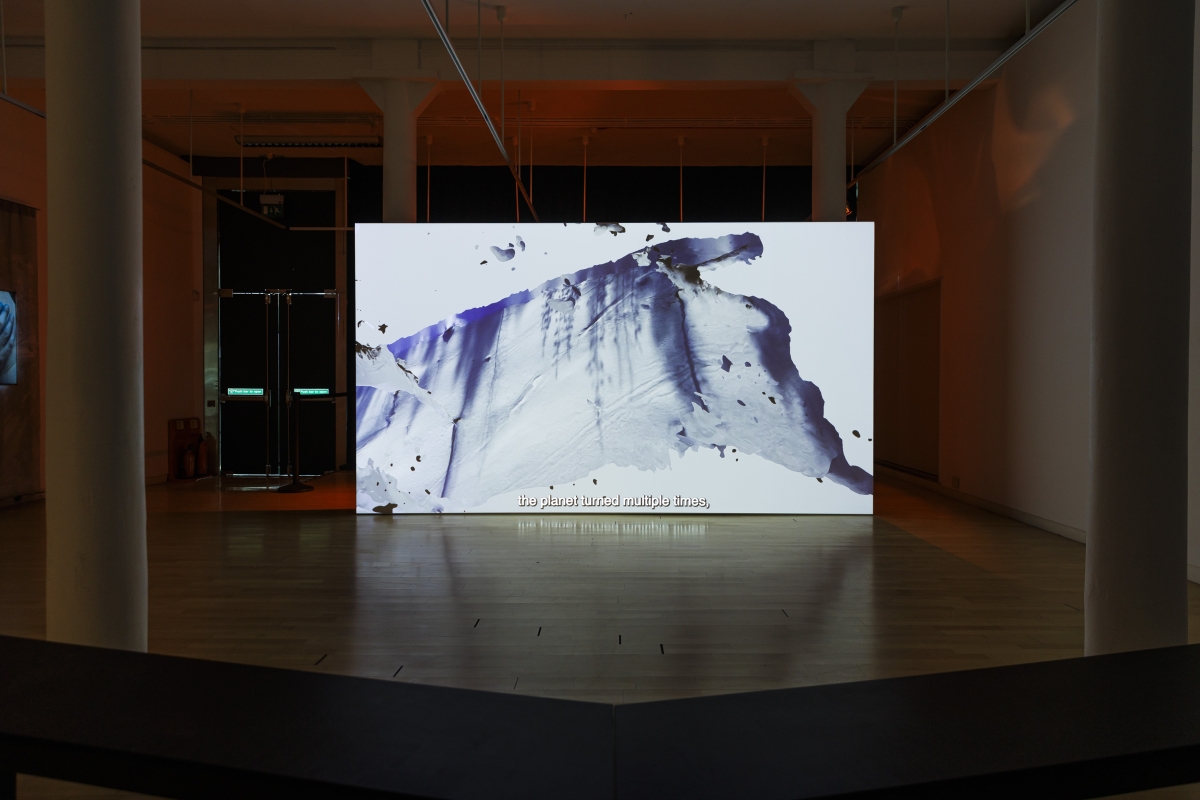
Diad, Arctic Swell, exhibition A Simple Melody, Street Level Photoworks. Photo: Eoin Carey
JŠ: Let us talk about the difference between the relationship with the environment in Scotland and Lithuania. What are your insights?
KUK: In Vilnius, I grew up under very rural-like conditions. During my first sixteen years, I lived in a small wooden house in Šnipiškės, which is not there anymore. I was the third generation that was born there. There was a garden and a firewood shed nearby, as the house was heated by firewood. When I was little, we only had an outdoor toilet. Later, we put one inside. We only installed a shower in the house when I was 10 or 11 years old. The White Bridge had not been built yet. Nevertheless, we lived 15 minutes by foot from the city centre.
My family used to grow a lot in the garden. During the late soviet times and early independence years, people used to maintain gardens not exactly for pleasure, as the middle class in Scotland does with their allotments. One grows two tomatoes because it is a hobby. In Lithuania, it was more about survival so the potatoes grown would be cheaper.
When my family comes to Glasgow, they ask me where the boundary is between the end of the city and the beginning of nature. What we call nature in Lithuania is usually a forest. One walks for long hours and there are no cars or people in sight. Travelling from Glasgow to Edinburgh by train, there is no such thing. The suburbs carry on and turn into towns and cities. To reach a more natural (words are difficult here) nature that would not feel like a country park planted by the nobility, you have to drive quite far, and this is what I lack here. For one-day trips, it is possible to drive around Glasgow in many directions. However, such places usually come with huge car parks and are aimed at people strolling with their dogs. I quite like taking walks in the grim fields and forests around Vilnius.
It is challenging to reach any kind of conclusion. In Lithuania, many people still have where to go and whom to visit in the countryside. There is typically only one or two generations between the people who worked the land and the young people residing in cities. In my circle in Scotland, almost everyone has grown up either in cities or suburbs, therefore their relationship with nature is slightly different. Those who wish to get away from cities choose to climb hills or camp.
JŠ: You now work at the One Health Institute of the University of Glasgow. The idea of one health recognises that to maintain optimal health, we have to look at the interrelations between people, animals, plants and the environment. Does this academic setting influence your creative practice? I am also thinking about structures and infrastructures that, talking very broadly, shape relationships with the environment globally. What does it mean to work at a university whose alumni include James Watt, the inventor of the steam engine?
KUK: Just like many other artists, I coordinate my creative practice with my so-called day job. I am very lucky indeed that over the last eight years, I have been working either in the field of archive digitalisation or the One Health Institute. From time to time, I teach at the Glasgow School of Art. All these roles surely influence my practice.
From archive digitisation, I took the photogrammetry technique (seen in the Amateur Botanist and Arctic Swell works), using real and fictitious archives (such as in my earlier work Impossible Colonies and Sylvan, currently in development) and the paper marbling technique (part of my new collage series Holders).
The One Health Institute has inspired me because global, significant and important issues are studied through very concrete and tiny changes, such as how the changes of a few degrees Celsius can affect avian circadian rhythms, or the analysis of salmon digestive systems in the context of the heated climate. I like working with different scales, it is a sort of disorienting poetry arising from the juxtaposition of celestial bodies with hormonal rhythms, or the relation between satellite monitoring data and the travel of pollen. I am glad to have found myself in the department of such scientific research rather than one of business studies.
Talking about the structures that shape the relationship with the environment, I find it fascinating how and why knowledge is disseminated. We see many cases when research data is corrupted and misrepresented on purpose. Lobbyists of big industries are working tirelessly and people are influenced by various, already disproved studies, for instance, about the consumption of alcohol, meat or fat, all the while, the fossil fuel industry is dedicating all their resources to ensure we continue burning fuel at full capacity.
I do not know really what it means to work at a university where James Watt had studied. Universities are quite contradictory institutions. However, I would still choose to work in an educational setting rather than a big corporation. The student community in Scotland is quite active and the university staff are unionised. In this way, we can put pressure on the university when thinking about such ethical questions as weapons or fossil fuel divestment.

Sylvan (Letter 02). Photo: Kotryna Ūla Kiliulytė
JŠ: Finally, I would like to ask you about your most recent work Sylvan, a publication consisting of textual and visual material. In your practice, the relationship with the environment is both abstract and specific. The final text of this publication are love letters between the Białowieża and Caledonian Forests. In the letters, interpreted by a classified group of scholars, there are many unfinished sentences or redacted and crossed out words. At the end of the publication, there is a disclaimer that we can ask for help to interpret the text. I would like to request a consultation—could you talk more about this project?
KUK: Sylvan was born out of several inspirational sources. Although I have worked mostly with visual projects, my work began to be infused with words and texts already a few years ago. At first, texts became the soundtrack or the dialogues of moving images. Later, they turned into a separate publication called Arctic Swell. Eventually, I started setting myself free from feeling limited by my second or third language and relaxed when writing in English. I try to use my other languages when writing, it helps me to avoid clichés.
The three visual-textual works in Sylvan are both separate and related. I started the collage series Holders even before the pandemic. It took me a long time to learn the ancient paper marbling technique. These paper-marbling works have not been displayed yet; I am waiting for the right moment. The short story Myriad Forest came into being unexpectedly. It just came to me after a week spent in the Białowieża Forest. I had never planned to write fiction, especially sci-fi (or maybe this is strange fiction?) until the medium presented itself in conjunction with the topics I was developing.
Sylvan, which I could call an experimental short story, is the core of the project I am developing now. Roughly a year ago, I started developing an interdisciplinary project that revolves around the communication between these two forests. I shot footage and recorded sound in several places of what is left of the Caledonian Forest in Scotland and Białowieża Forest in Poland. In parallel to this, I am making sculptural objects and writing. I was speaking very broadly about ecology, biodiversity and metamorphosis, and I wished to find a more specific approach. The imaginary script, probably also coming from the strange fiction sphere, helps me bring structure to a more abstract thought. Even if I am reading not as much as I would like to, in the last few years, the books that stuck most with me were of the strange fiction genre. Sometimes, this genre with all its imaginary worlds, tells me more about our world than environmental observation or documentaries.
I am unable to share my interpretation of the text just yet. In the future, it will be provided in the shape of visual-sculptural objects when other parts of the works are finished. Sylvan is my fantasy about making ourselves understood by the more-than-human forms and about interspecies intimacy. Quite straightforwardly, this idea arose from my love of forests. I feel best and lightest when I am breathing in green sanctuaries, like the pine forests of Dzūkija, the hilly and endangered Scottish forests or the lichen-filled Finnish woods. Then, I started reading about forests, trees and ecosystems. I talked with scientists and became fascinated by research in biology that refutes the idea of a biological individual. An individual is not only an ecosystem but also a collection of ecosystems. A holobiont. The forest is a holobiont and I am too. We are connected by multiplicity and that is basically what Sylvan is about. I am also curious to see what shape this unfinished work will gain with all its audiovisual and sculptural elements.
JŠ: Thank you for the conversation, Kotryna. And many thanks to Milda!
KUK: Thank you both! Until next time.
From September 25th until January 19th, Kotryna Ūla Kiliulytė‘s works are on display in the group exhibition Earth Gazes Back at Photo North – Northern Photography Centre in Oulu, Finland.
